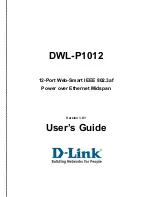
7.
Enter the password again in the Enter New Password Again field. If you forget this password, the drive is
rendered permanently disabled.
8.
Select File > Save Changes and Exit, and then press
enter
to accept the changes. After you press
enter
,
the computer performs a cold start before invoking the DriveLock function.
When the computer starts, you are prompted to enter the DriveLock password for each DriveLock-
capable drive for which you have set a password. You have two attempts to enter the password
correctly. If the password is not entered correctly, the computer attempts to start anyway. However, the
boot process most likely fails because data from a locked drive cannot be accessed.
In a single drive computer, if the drive has DriveLock enabled, the computer might not be able to boot to
the operating system, and might try to boot from the network or from another storage device
(depending on the boot ordering options). Regardless of the outcome of the start attempts, the drive-
locked drive remains inaccessible without the DriveLock password.
In a two-drive computer that has a boot drive and a data drive, you can apply the DriveLock feature to
the data drive only. In this case, the computer can always start, but the data drive is accessible only
when the DriveLock password is entered.
When you start or restart the computer, you must enter DriveLock passwords. For example, if you boot
to DOS and press
ctrl+alt+del
, you must enter the DriveLock password before the computer completes
the next start cycle. This restart-start behavior is consistent with the DriveLock feature.
Password security
This computer supports security password features, which can be established through the Computer Setup
Utilities menu.
This computer supports two security password features that are established through the Computer Setup
Utilities menu: administrator password and power-on password. When you establish only an administrator
password, any user can access all the information on the computer except Computer Setup. When you
establish only a power-on password, the power-on password is required to access Computer Setup and any
other information on the computer. When you establish both passwords, only the administrator password will
give you access to Computer Setup.
When both passwords are set, the administrator password can also be used in place of the power-on
password as an override to log in to the computer. This is a useful feature for a network administrator.
If you forget one or both passwords, you can clear all passwords by powering off the system, opening the
cover, temporarily removing the PSWD jumper, and booting once. This will erase the administrator and
power-on passwords. You must restore the jumper to create new passwords.
CAUTION:
Pushing the CMOS button with power removed will reset the BIOS settings to factory defaults. It
may be useful to back up the BIOS settings or save them as custom defaults before resetting them in case
they are needed later. Back up can be performed in Computer Setup or using the BiosConfigUtility tool
available from www.hp.com. See
Computer Setup (F10) Utilities on page 18
for information on backing up the
BIOS settings.
Establishing an administrator password using Computer Setup (F10) Utility
Establishing an administrator password through Computer Setup (F10) Utility prevents reconfiguration of the
computer (through the use of Computer Setup (F10) Utility) until the password is entered.
To establish an administrator password using Computer (F10) Setup menu:
36
Chapter 2 System management
Summary of Contents for Z240 Small Form Factor
Page 1: ...HP Z240 Workstation Maintenance and Service Guide ...
Page 4: ...iv About this guide ...
Page 10: ...x ...
















































